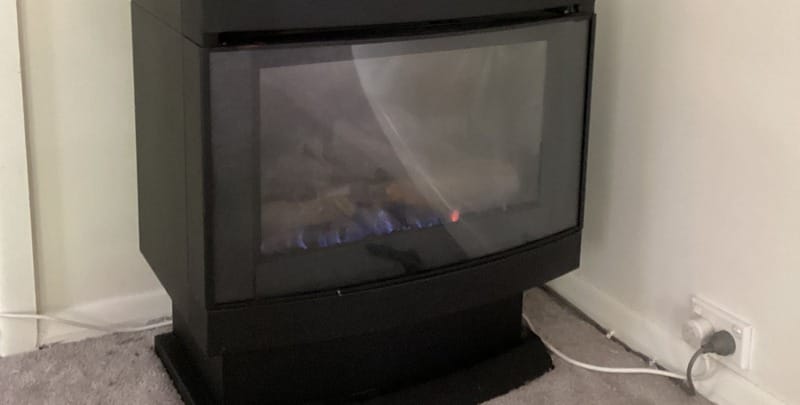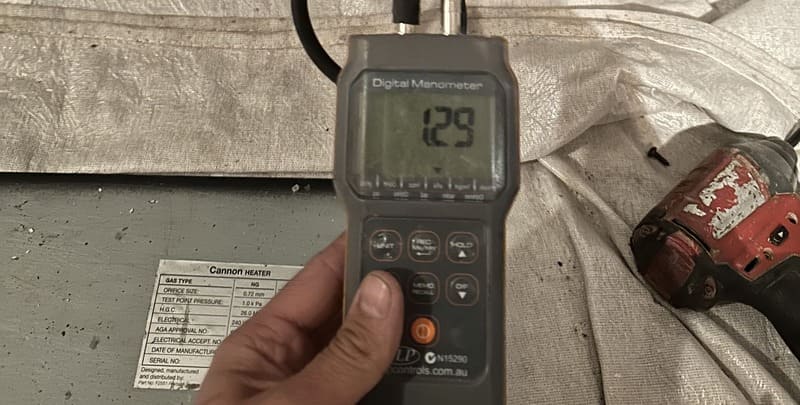
Gas or Electric Fireplaces: Which is Best?
The debate between gas and electric fireplaces continues to heat up, with each offering distinct advantages for homeowners.
Gas fireplaces, known for their real flames and high heating capacity, provide the traditional ambiance of a wood burning fireplace without the hassle of chopping wood or cleaning ashes. They operate on natural gas, requiring a gas line and sometimes venting systems to maintain indoor air quality, but offer energy-efficient heating and straightforward installation.
On the other hand, electric fireplaces require only an electrical outlet to bring warmth and charm to a room, boasting ease of installation and minimal ongoing operational costs. With their adjustable heat settings and flame effects, electric fireplaces offer a safe alternative, suitable for small living spaces and reducing local air pollution.
Whether it’s the allure of real flames in a vented gas fireplace or the convenience of an electric counterpart, selecting the right fireplace involves considering factors like installation costs, energy consumption, and the existing fireplace setup in your home.
Understanding Gas Fireplaces
Gas fireplaces embody the perfect blend of tradition and modern convenience, offering the charm of traditional wood burning fireplaces with the ease of contemporary technology.
Unlike their wood-burning counterparts, gas fireplaces eliminate the need for constant refuelling and cleaning. They use natural gas, a clean and efficient fuel source, making them a popular choice for those seeking the warmth of a fire without the fuss.
Modern gas fireplaces come in various styles, including ventless and vented models, each designed to suit different living spaces and ventilation requirements.
Ventless gas fireplaces, also known as unvented or vent-free, circulate indoor air and do not require a chimney. Vented models, on the other hand, expel combustion gases to the outdoor air, requiring a flue or chimney but offering higher heating capacities and more authentic flame effects.
Installing a gas fireplace involves connecting to a gas line, and professional installation is recommended to ensure safety and optimal performance. This includes proper ventilation and the installation of a carbon monoxide (CO) detector to monitor air quality and prevent gas leaks.
The running costs of gas fireplaces are generally lower than electric fireplaces, particularly in areas where natural gas is inexpensive. They offer remote operation, adjustable temperature settings, and thermostat controls, providing convenience and energy efficiency.
Gas fireplaces not only enhance the aesthetic of a living space with their real flames and minimal installation requirements but also contribute to a cosy and inviting atmosphere.

Exploring Electric Fireplaces
Electric fireplaces epitomise modern convenience, offering a clean, effortless alternative to traditional wood burning and gas fireplaces. With high efficiency and lower installation costs, electric fireplaces have become a popular choice for homeowners seeking both ambiance and practicality.
Unlike gas fireplaces, which require a natural gas supply and professional installation, electric fireplaces operate simply by plugging into a standard electrical outlet, eliminating the need for gas lines or venting systems.
The installation process for an electric fireplace is straightforward, often requiring no more than positioning the unit and connecting it to power. This ease of installation, combined with minimal maintenance and no need for a CO detector, makes electric fireplaces a hassle-free option. They are particularly suitable for apartments or homes without a gas connection, offering adjustable temperature settings and flame effects that mimic the charm of a real fire without the combustible gases.
Electric fireplaces are known for their high energy efficiency, converting nearly all their energy into heat with minimal daily energy consumption. This efficiency can lead to lower electricity bills compared to the daily gas consumption of a gas fireplace, especially when used for supplemental heating.
Additionally, electric fireplaces come in various designs, from freestanding to wall-mounted units, with glass surfaces that enhance their aesthetic appeal.
With features like adjustable flame effects and remote-control operation, electric fireplaces provide the warmth and ambiance of a traditional fireplace, while offering the added benefits of safety, ease of use, and reduced environmental impact.
Cost Comparison: Gas vs Electric Fireplaces
Comparing the costs of gas and electric fireplaces involves considering installation, running expenses and maintenance. Initially, a gas fireplace may require a higher outlay due to the need for a gas line and professional installation to ensure safety and optimal performance.
This includes ensuring proper ventilation and the potential installation of a CO detector, adding to the overall cost. However, the gas consumption rate and subsequent gas bills can be lower than the electricity bills for electric counterparts, especially in regions where gas is cheaper.
Electric fireplaces, on the other hand, boast a straightforward installation process, often as simple as placing the unit and plugging it into an existing electrical outlet, which can lead to lower installation prices.
While the power consumption of an electric fireplace might contribute to a higher electricity bill, especially during peak usage, they require less professional installation and no venting, which can reduce initial expenses.
Running costs can vary based on usage, with electric fireplaces often being more cost-effective for occasional use and gas fireplaces potentially offering savings for regular heating. Both types require some maintenance to maintain optimal performance, but electric units typically incur less ongoing expense, lacking the need for gas lines, venting, and carbon monoxide monitoring.

Environmental Impact
The environmental impact of electric and gas fireplaces varies significantly. Gas fireplaces emit CO and other combustion gases, affecting outdoor and indoor air quality, necessitating proper venting and the installation of carbon monoxide detectors. Although gas fireplaces provide heat efficiently, their environmental footprint depends on the source of the gas and the efficiency of the unit installed.
Electric fireplaces, in contrast, produce no direct emissions, making them a cleaner option that doesn’t contribute to indoor air pollution or require venting.
However, their environmental impact hinges on the source of the electricity used. If the power comes from renewable sources, electric fireplaces are more environmentally friendly, but if it’s derived from fossil fuels, the indirect emissions can be considerable.
Both types of fireplaces have professional installation requirements that can influence their overall environmental footprint, with energy-efficient models and proper installation practices reducing the impact on both carbon dioxide emissions and running costs.
Aesthetic and Practical Considerations
When choosing between an electric or gas fireplace, aesthetic and practical considerations are paramount. Gas fireplaces, with their real flames, offer a traditional look and feel, mimicking the ambiance of a wood fireplace. Their installation often requires a natural gas line and adherence to safety protocols, including a CO detector, especially when installed indoors.
Electric fireplaces, on the other hand, provide a modern aesthetic with their sleek glass surfaces and can be installed virtually anywhere, needing only an electrical outlet. They offer the convenience of less complex installation processes and no need for venting, making them suitable for air quality concerns.
Practically, the choice between gas and electric fireplaces affects ongoing costs and maintenance. Gas fireplaces may lead to higher gas bills but often provide more substantial heating. Electric fireplaces, while potentially higher in operating costs, require less maintenance and avoid the risks associated with flammable items and combustion.

Making the Right Choice for Your Home
Choosing between an electric fireplace and a gas fireplace installed in your home hinges on your specific needs and preferences.
Consider the ambiance and warmth of a traditional wood burning fireplace against the modern, sleek glass surface of an electric unit. Factor in installation requirements, operating costs, and the importance of air quality, ensuring safety with a CO detector if necessary.
Whether you opt for the tangible heat and aesthetic of a gas fireplace or the convenience and cleanliness of an electric fireplace, the right choice should harmonise with your lifestyle, decor and budget.
Please note: This information is provided for advice purposes only. Regulations differ from state to state, so please consult your local authorities or an industry professional before proceeding with any work. See Cyber Air Conditioning’s Terms & Conditions here.
